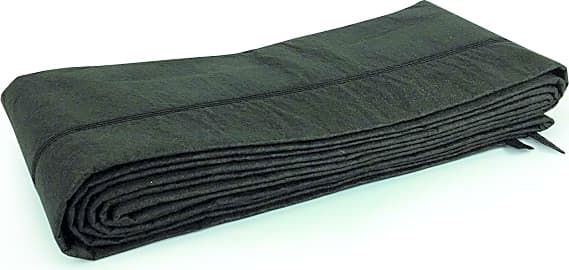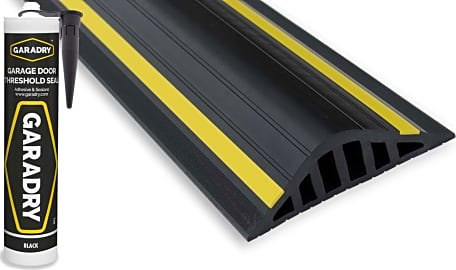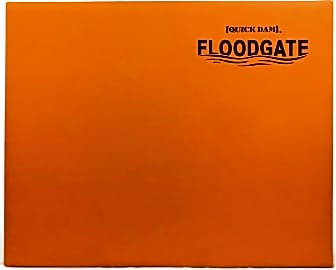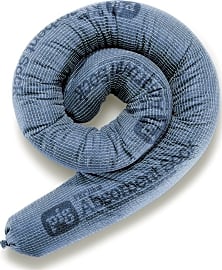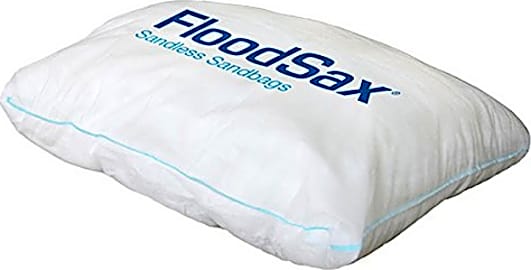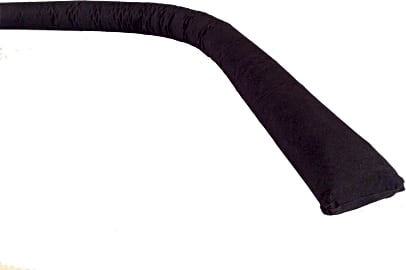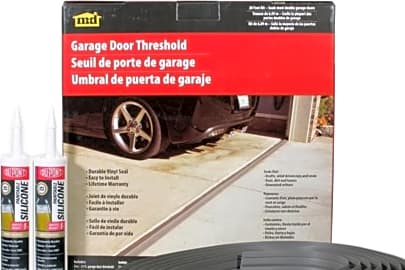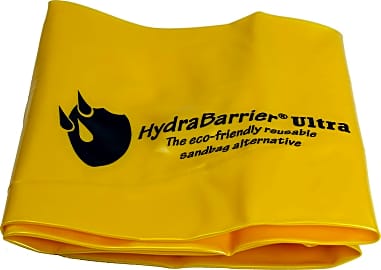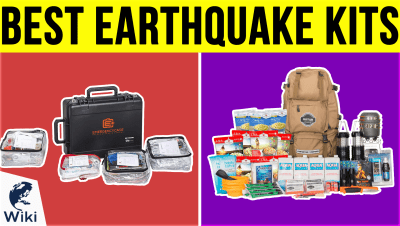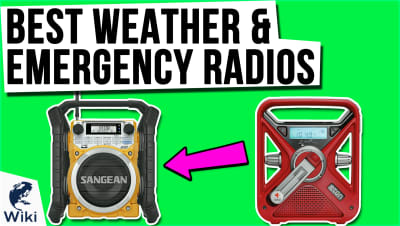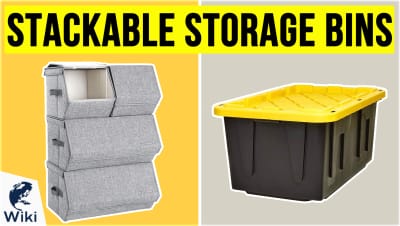The 10 Best Flood Barriers

This wiki has been updated 34 times since it was first published in February of 2017. If there is one thing nobody wants in their home or business, it is flood damage. If you live in a susceptible area, keep one of these selections tucked away and ready for quick deployment, ready to respond to the threat of a deluge. In the best-case scenario, you'll never have to use it, but it's always better to be prepared. Most don't require all that much storage space, either. When users buy our independently chosen editorial selections, we may earn commissions to help fund the Wiki.
Editor's Notes
March 16, 2021:
It was quite a forgiving round of updates for us, with nearly all of our previous picks for this category continuing to be good selections for this list. The only item we had any real issues with was the Climacover Diversion Tube, which wasn’t available at the time this update was published.
After giving it some careful thought, we added the Quick Dam Water-Gate to our list, even though it’s considerable cost is likely to be enough to scare off most would-be flood victims. This option originally caught our eye with its clever, self-rising design, but what really clinched its new placement at the top of our list was its claim of being able to replace more than 1,000 sandbags.
If you’ve ever hauled sandbags (and it doesn’t need to be 1,000 of them for you to qualify), you know that it's an arduous chore. So, for families and businesses located in flood zones, who are likely to need to prepare for rising water levels time and time again, this is an option that might be worth considering. It has a 20-year rated shelf life, so, in time, it may just turn out to be worth the investment.
If the flood threat you're facing is less in the arena of rising rivers and more in the realm of an overflowing sump pit or faulty appliance, then another way to help protect yourself might be by investing in a water sensor.
June 06, 2019:
The thought of a flood can strike fear into the heart of home and business owners, but we think that the Quick Dam Water Activated and the UpNorth White Woven Sand Bags can help allay some of this anxiety. The UpNorth is the traditional sand bag option most folks are aware of; we probably don't need to mention it, but these don't actually include sand, so you'll need to source your own. You should also be aware that in a disaster situation, the bags may take some abuse, so don't be surprised if you need to replace some. The Quick Dam model will probably need replacement after a season of use, but it doesn't require you to buy any other materials, as it's water activated. Quick Dam also offers the Flood Gate, which can protect vulnerable doorways. You won't need to make any alterations to use one, but they require a large upfront investment. Finally, we decided to remove the HydraSorber Sandless. There are ample self-inflating options available, and this particular version tends to have a problem with lumpiness. This means that it can be frustrating to use, or worse, ineffective. Consider the aforementioned Quick Dam Water Activated or the FloodSax Sandless Sandbags instead.
Special Honors
HSI Aqua-Barrier The HSI Aqua-Barrier is a water-fillable model, but unlike some, it's made from industrial-grade materials that are robust enough to go the distance. Not only that, but this selection is repairable, reusable, and customizable, should you need a non-standard size. hydrologicalsolutions.com
Denios Preparing for weather-related flooding is one thing, but what about when your workplace is suddenly struck by a dangerous chemical spill or unwanted sprinkler deployment? This Canadian company permanently installs manual and automatic flood barriers that can be installed at doorways to help contain flood situations, mitigating damage to your workplace in the process. denios.ca
Why Floods Are So Dangerous
They're particularly common in desert areas, where the soil tends to not be very absorbent anyway.
They may not seem so dangerous — after all, you know how to swim, right? — but floods are one of the most deadly natural disasters on the planet.
Worse than that, they're incredibly common. Just about any populated place on Earth can be hit with a flood at one time or another, and the areas in which flooding is rare are often the least-prepared to handle one.
The main reason is because water is heavy, and therefore when it's moving fast, it tends to hit with the power of a Mack truck. That's why you're often told not to drive through flooded streets in a rainstorm, as all it takes is two feet of water — moving as slowly as 6 mph — to wash your car away. Oh, and that 6-mph water? It has the same force as an F5 tornado.
That underscores one of the primary dangers of floodwaters: it's difficult to judge just how deep they are, or how quickly they're moving, until it's too late. Add in pouring rain that makes it difficult to even see the water in the first place, and you've got a recipe for death.
Flash floods are especially deadly, as they've been known to surprise people with walls of water up to 15 feet high. These happen when the soil is too saturated to absorb any more moisture, so that liquid has nowhere to go — except towards you at full speed. They're particularly common in desert areas, where the soil tends to not be very absorbent anyway.
It's not just the water you have to worry about, either — it's what's in the water, as well (you probably don't have to worry about sharks, though...probably). Floodwaters can cause sewage overflows, which can give you life-threatening infections if you're exposed to them, as well as obscure dangerous objects.
Power lines can also be dislodged during a heavy storm, and you probably already know what happens when you combine electricity and water.
In short, there are a lot of dangers out there — so you shouldn't be out there.
Tips For Flood-Proofing Your House
If you haven't given thought to what to do in the event of a flood, then it's time you do. They're the most common disaster in the United States — and the most expensive.
Unfortunately, if you haven't done any prep work and you've started to notice animals marching two by two in front of your house, there's not much you can do besides moving all your valuables upstairs, putting barriers down, and praying for the best. Then — and this is extremely important — you should take your kids and pets, and you should evacuate.
These are the things that can be truly dangerous, and can wreck your home if you're not careful.
If you've got time, though, there are a few precautions you should take while you can.
The first is to make sure you have flood insurance. Most renter's and homeowner's policies don't carry it as part of a basic package, so cough up the extra money and protect yourself — especially if you live in an area that floods regularly.
If you can afford it, you should retrofit your entire house to be able to handle rising waters. This means raising the electrical outlets, ventilating the foundation, and even raising the entire home onto piers if you can.
Also, try to keep your furnace, water heater, and other major appliances over your home's flood level. These are the things that can be truly dangerous, and can wreck your home if you're not careful.
Ultimately, though, despite your best efforts, at some point you just have to acknowledge that you can't beat Mother Nature. If you want to really play it safe, though, you can always move to someplace where it's less likely to be a problem.
You know, like the places nobody wants to live.
What To Do If You're Caught In A Flood
If you're stuck in your home with floodwaters rising, here are a few things you should do to keep yourself safe.
Hopefully, you have a disaster kit — and if you don't, make one ASAP — but if not, quickly gather up valuable supplies. This includes drinking water (lots of it), non-perishable food, medications, flashlights and candles, and anything else you absolutely can't live without. Then, place sandbags or barriers at any point where water is likely to seep in.
And no, your Xbox doesn't count as something you can't live without — but a survival radio does.
Just take a few precautions, play it smart, and listen to emergency personnel, and you've got a real shot at coming out in good shape.
Once the water starts to rise, get to higher ground. The second story of your home is a good place to start, but if you're caught outdoors, stay away from low-lying areas and anywhere that's already flooded.
As we mentioned above, you should never go into rising water. It takes as little as six inches to knock you off your feet, and once you're down, it's extremely unlikely you'll be able to get up again.
So, if you see someone else who needs help, it's important you don't try to go in after them. That's a recipe for getting you both killed. Instead, find some rope and a flotation device, and toss them to the victim. Then, with the assistance of others (preferably emergency personnel), try to bring them in to safety.
Don't assume that just because the flooding has stopped that the danger is over, however. Your drinking water might be compromised, and any food or medicine that got wet needs to be tossed. Also, be extremely vigilant about gas leaks, fire hazards, or live electrical wires.
While floods can be extremely deadly, there's no reason why you can't survive one relatively unscathed. Just take a few precautions, play it smart, and listen to emergency personnel, and you've got a real shot at coming out in good shape.



